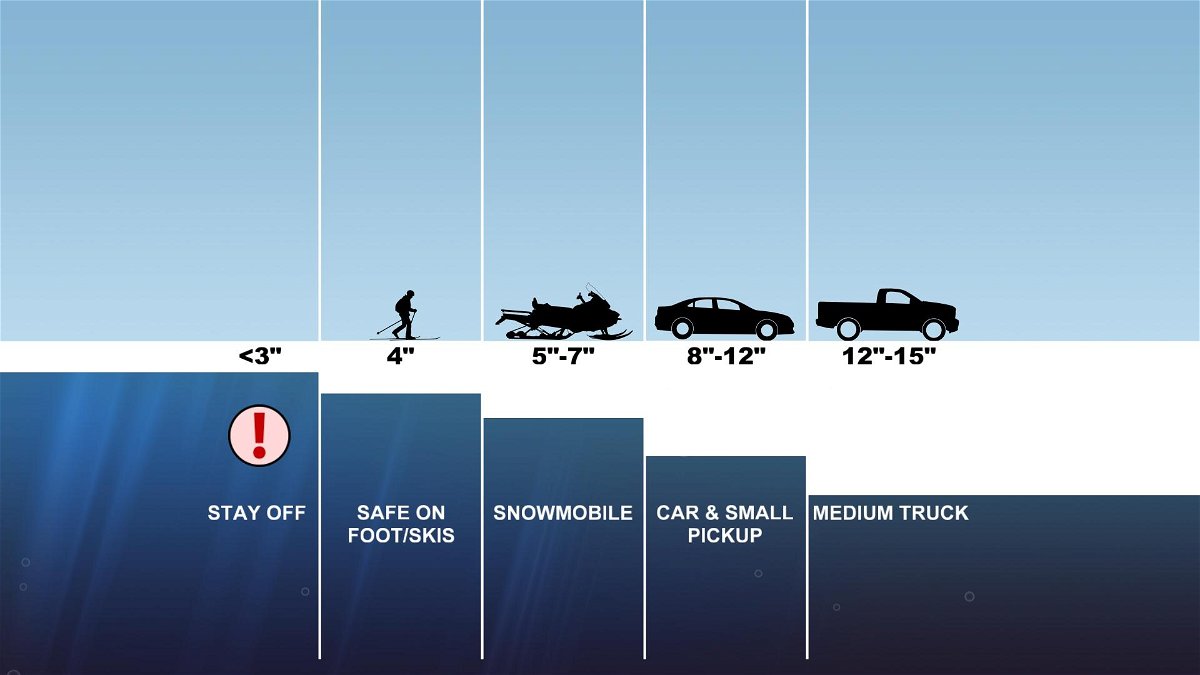Ice thickness safety
A quick glance at the extended forecast outlook reveals a cooling trend with below average temperatures expected. This might have some people excited to break out their ice skates to shave some ice. Although this activity is fun, it can be dangerous on ponds and lakes if you are not aware how to check for ice thickness and understand: How thick is thick enough?

Ice thickness that remains below 4" is considered to think and should not be explored. Ice of this thickness can easily break causing dangerous life threatening consequences. Once ice reaches thickness depths of 4" or greater you aren't completely out of the danger zone either. Water levels below the ice can rise and fall creating no support under the ice. This means much of the ice could be free standing making it even weaker.
Another good tip is to stay away from any protruding objects in the water such as trees or anything other standing structures as these can act as weak points.
It can take multiple weeks of freezing to below freezing temperatures consecutively for enough ice to accumulate to create safe conditions. Any warming periods can lead to the warming of the water under the ice causing melting from both sides of the ice.
